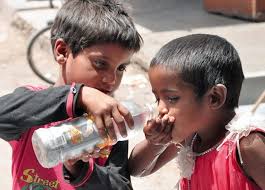JAIPUR: Noting that the two-month-long lockdown may increase the number of underweight children by millions, the Indian Institute of Health Management Research (IIHMR) University, has called for modified parameters that focus on borderline children for better identification of at-risk groups and calibrate policy implementation accordingly.
A 0.5 per cent weight loss in these children, belonging to the poorest 20 per cent of households in Rajasthan will add about 20,849 and 144,460 cases of underweight and severely underweight children, respectively, to the country’s existing burden, said a recent study titled ‘Living on the Edge’.
The findings of the study, led by Dr Sunil Rajpal, Asst Professor, Health Economics, IIHMR University, was published, along with co-authors, in the Journal of Global Health Science.
“Precision targeting is one of the fundamental requirements of any development policy or programme. However, the success of such interventions depends on how precisely the policy can identify the target, i.e. at-risk population. States like Uttar Pradesh and Bihar are at risk of experiencing a relatively much larger increase due to a higher population base along with mass in-migration. Therefore, it is imperative to escalate the efforts for restoring the ground-level nutrition interventions,” said Dr Rajpal.
The vulnerability may be higher in rural and tribal areas of southern Rajasthan such as Udaipur, Bhilwara, Chittorgarh, Dungarpur and Banswara districts as more than half of the children from poor households rely on food supplementation from government schemes such as Integrated Child Development Services (ICDS), and mid-day meal programme.
The abrupt diversion of Aanganwadi Workers (AWWs) towards COVID-19-related tasks has disrupted their usual activities of providing food supplementation under ICDS and is likely to have an adverse impact on dietary intake of children.
“At this juncture, it is critical to navigate the interventions towards the poorest strata. Direct cash transfers in the hands of women in reproductive age, pregnant women, and lactating mothers from the poorest households could be effective to ensure dietary intake. This must include single women, such as widowed, divorced, abandoned, and unmarried women.
“Along with the quantity of food supplementation, it is also important to focus on diet quality, assessing the nutrition requirements of children – a judicious mix of providing additional items such as cooking oil, etc and transferring cooking cost may help more than a linear approach. Active participation of frontline health workers, such as ASHA and AWWs, and other ground-level functionaries is important to maintain uninterrupted supply,” said Dr Rajpal.
“People belonging to the poorest section of society are mostly employed in the unorganised sector. They have been pushed to the brink due to a lack of access to the right food and widespread job loss. This makes ensuring food supply to these people an imperative. Failing to provide them, especially children, the requisite nutrition will have long-term health and economic consequences for India,” said Dr. P.R. Sodani, Pro President, IIHMR University.







